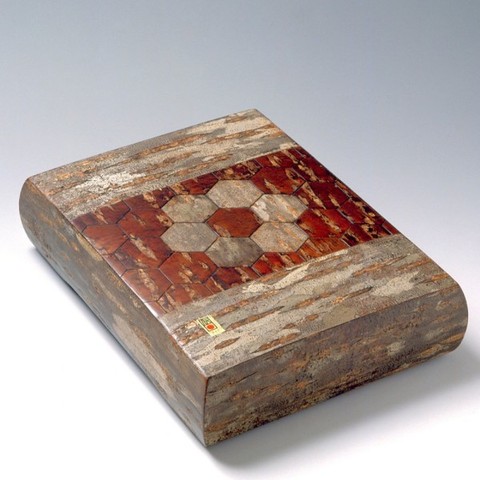
樺細工は、18世紀末に、佐竹北家により、秋田県北部の阿仁地方から角館に技法が伝えられたのが始まりとされています。
佐竹北家の城主に手厚く保護を受けた樺細工は、下級武士の副業として広まりました。明治時代に入ると、禄を失った武士が、収入を得るために本格的に取り組んだことで、今日の原型と言える作品が作られるようになりました。

It seems that cherry-bark work goes back to the end of the 18th century, when the techniques were passed on to the people in Kakunodate by the Satake Kita-family from the Ani district in the north of Akita Prefecture. The production of cherry-bark goods was given the patronage of the feudal lord to which the Satake Kita- family was attached and was taken up by lower-ranking samurai, firstly as a part-time occupation. Then at the beginning of the Meiji period (1868-1912) this work became a major source of income for them after they lost their warrior status. They then started to produce the prototypes of today's cherry-bark goods.
Made from the bark of wild cherry, this work cannot be found anywhere else in Japan. There are about twelve different types of bark including amekawa, chirashikawa and hibikawa, the choice of bark depending of the article being made. The variations of the bark mean that no two pieces are ever the same. Nearly always applied to a carcass, many different articles can be made using this very appealing natural material but one of the most effective celebrations of its qualities is for tea caddies. There are 11 government recognized Master Craftsmen among the total of 300 staff now employed by the 103 firms leading this small craft industry.